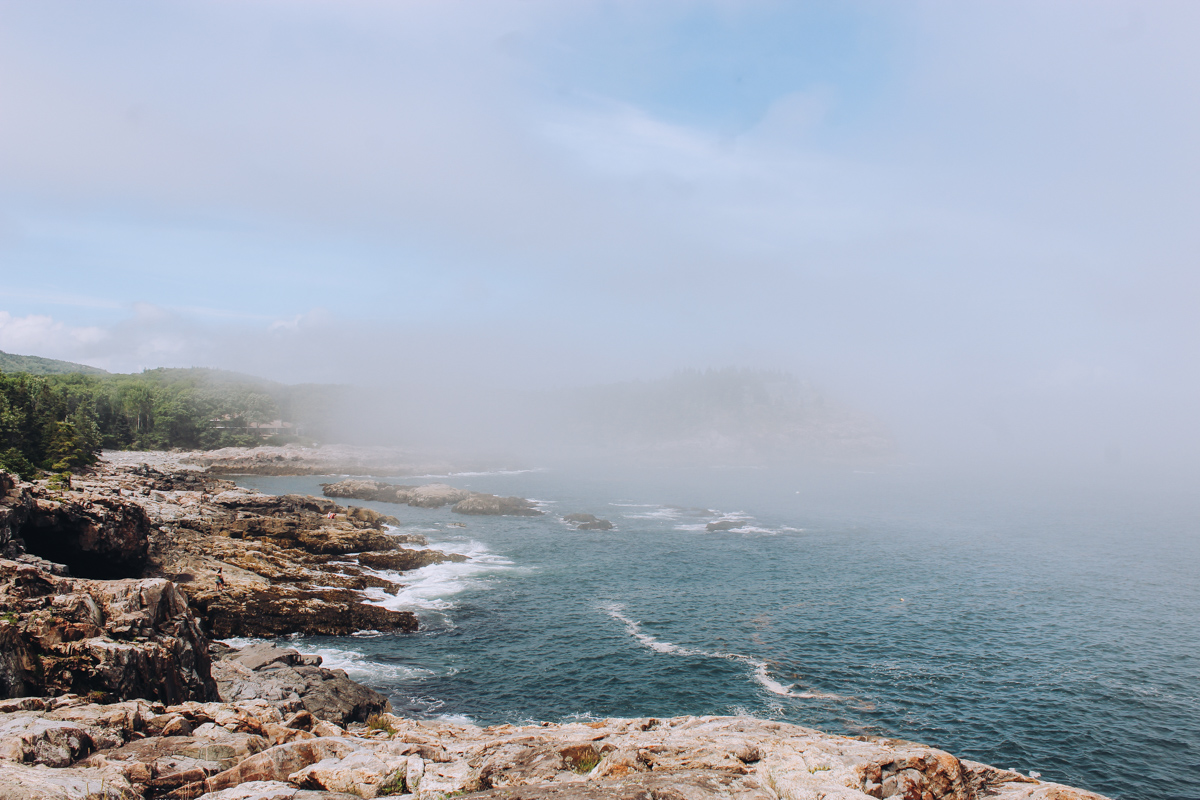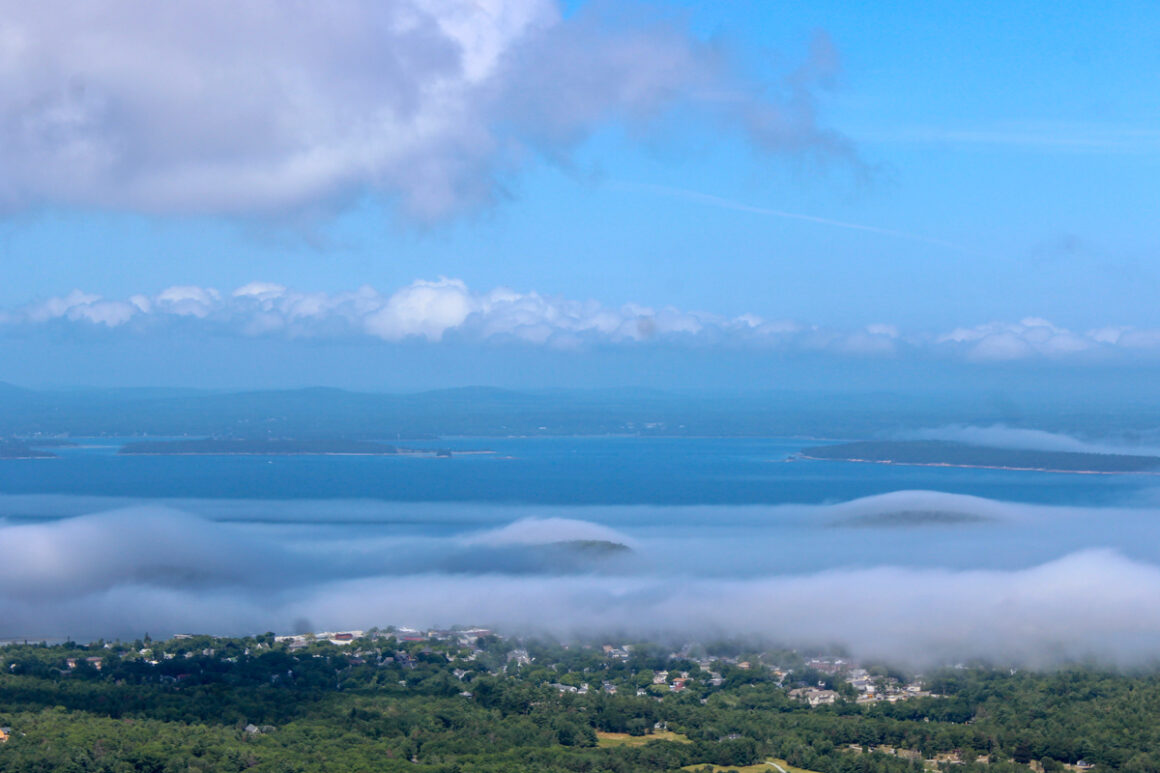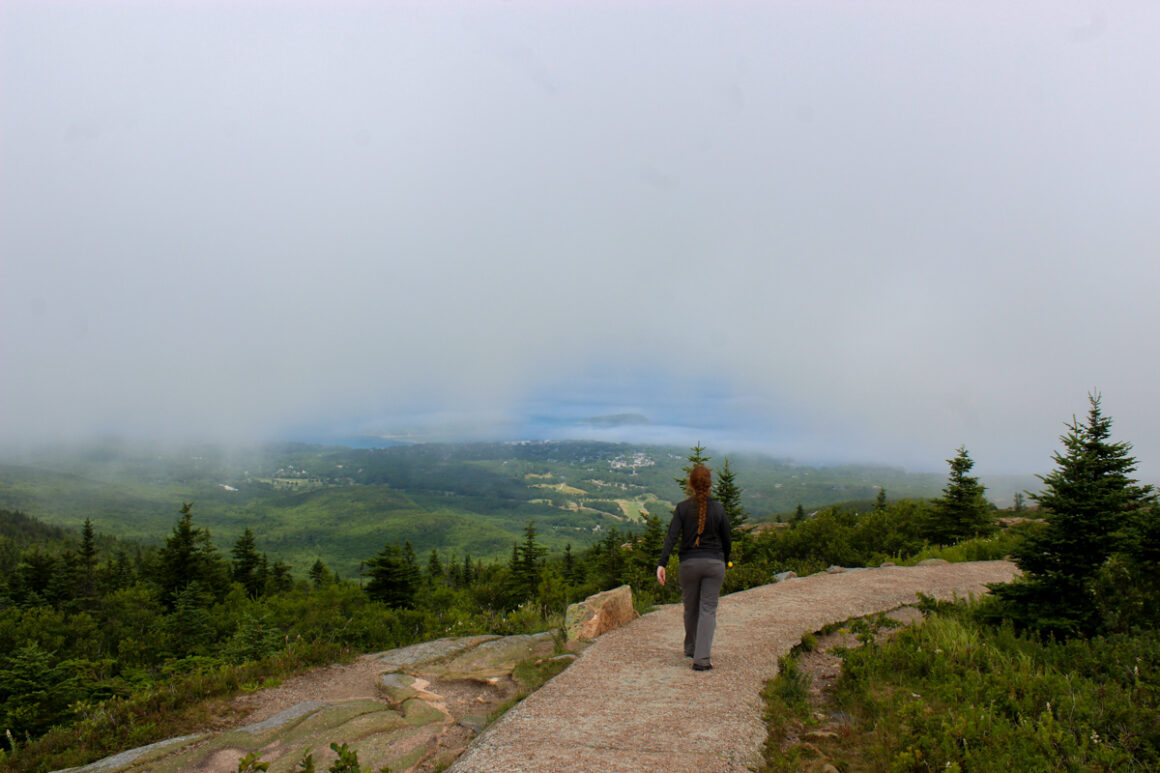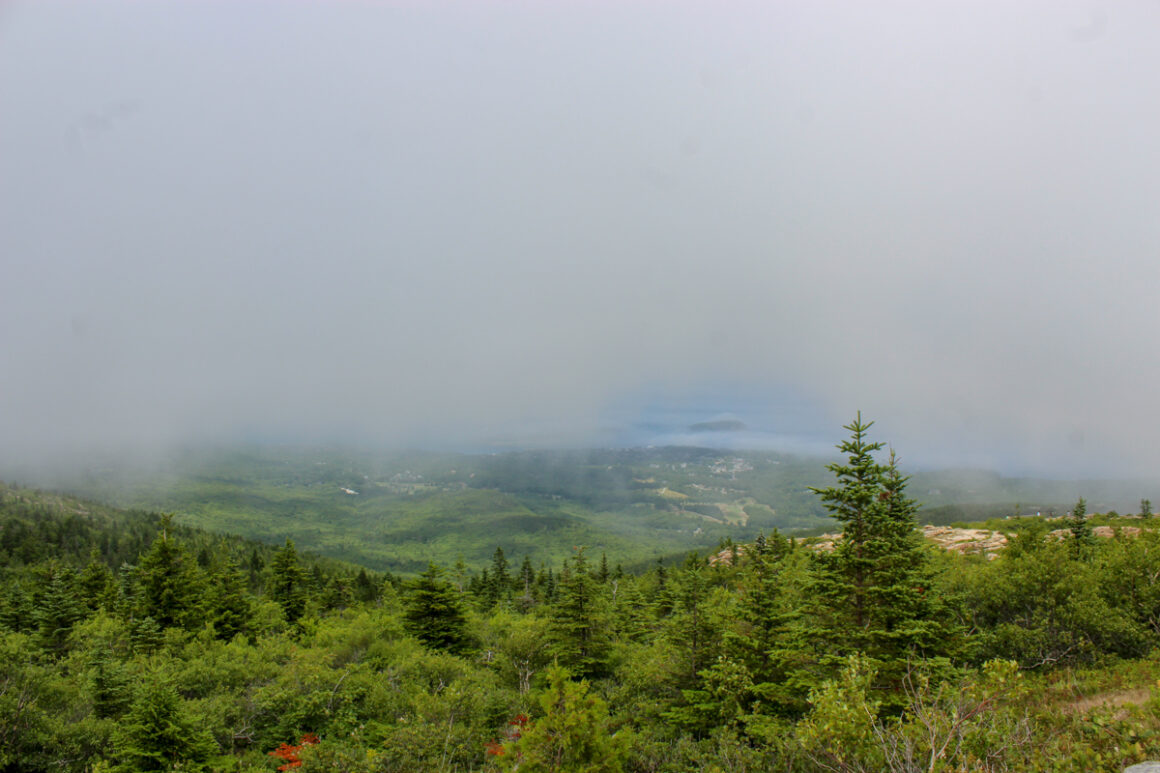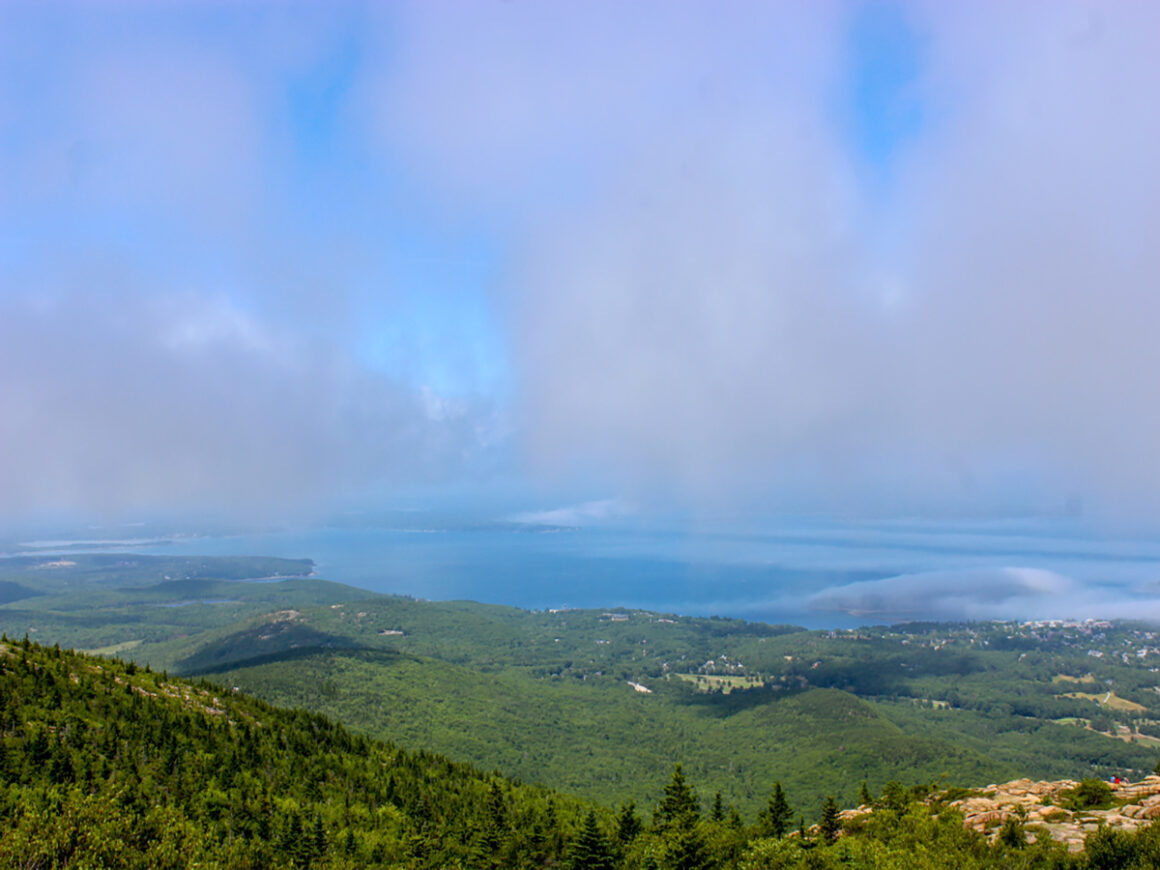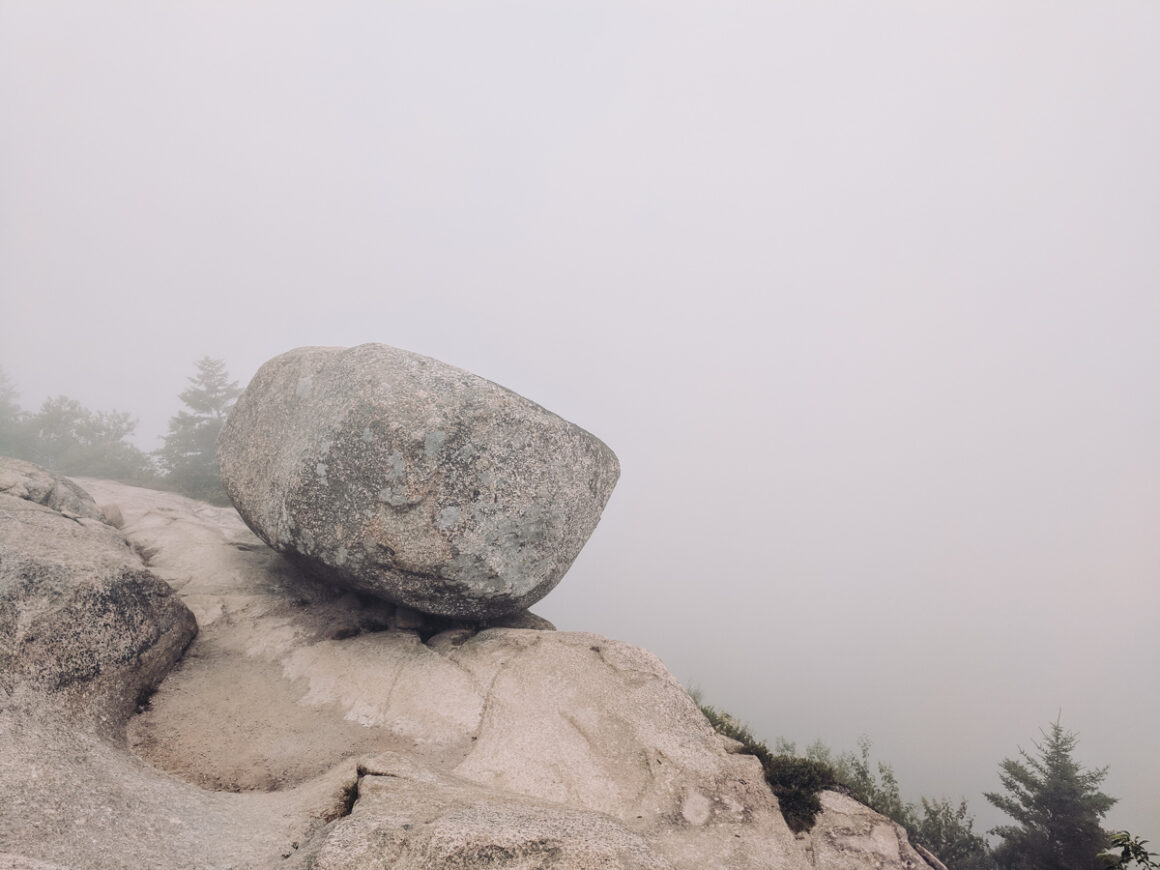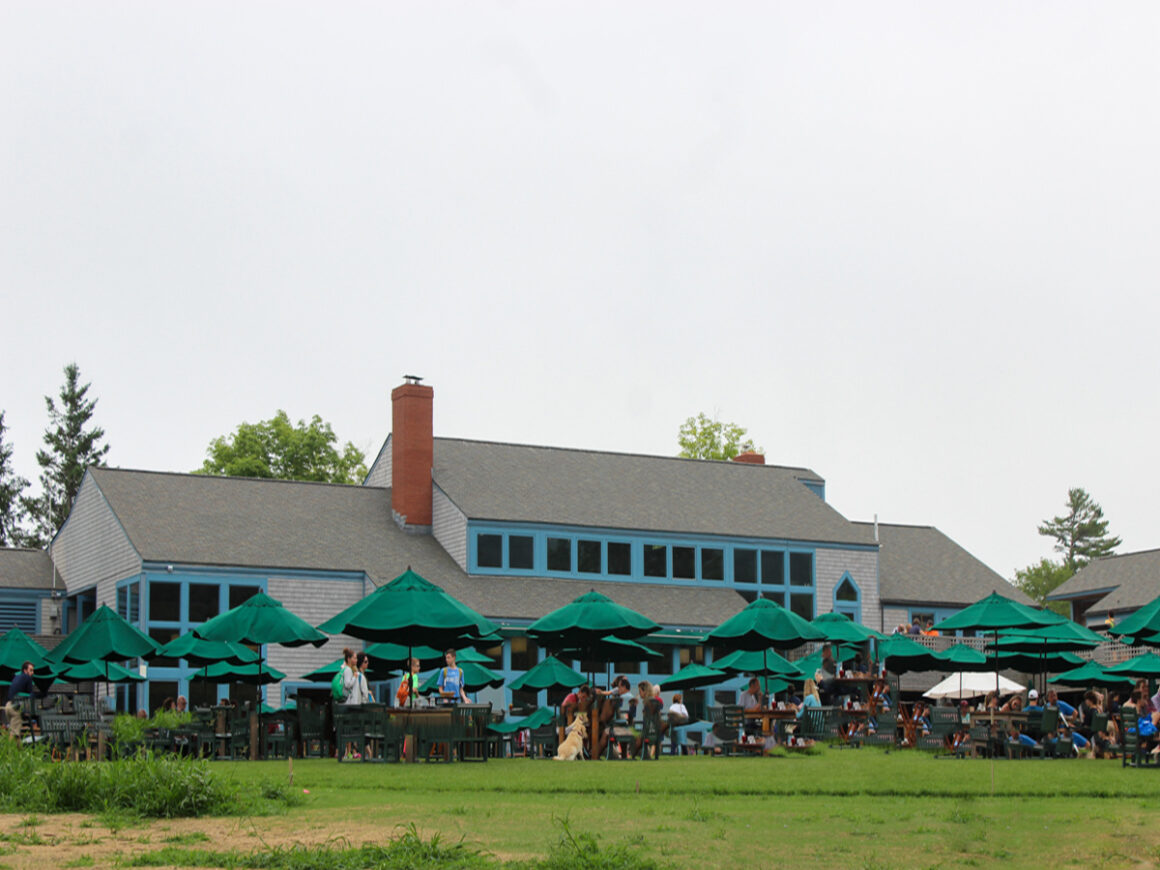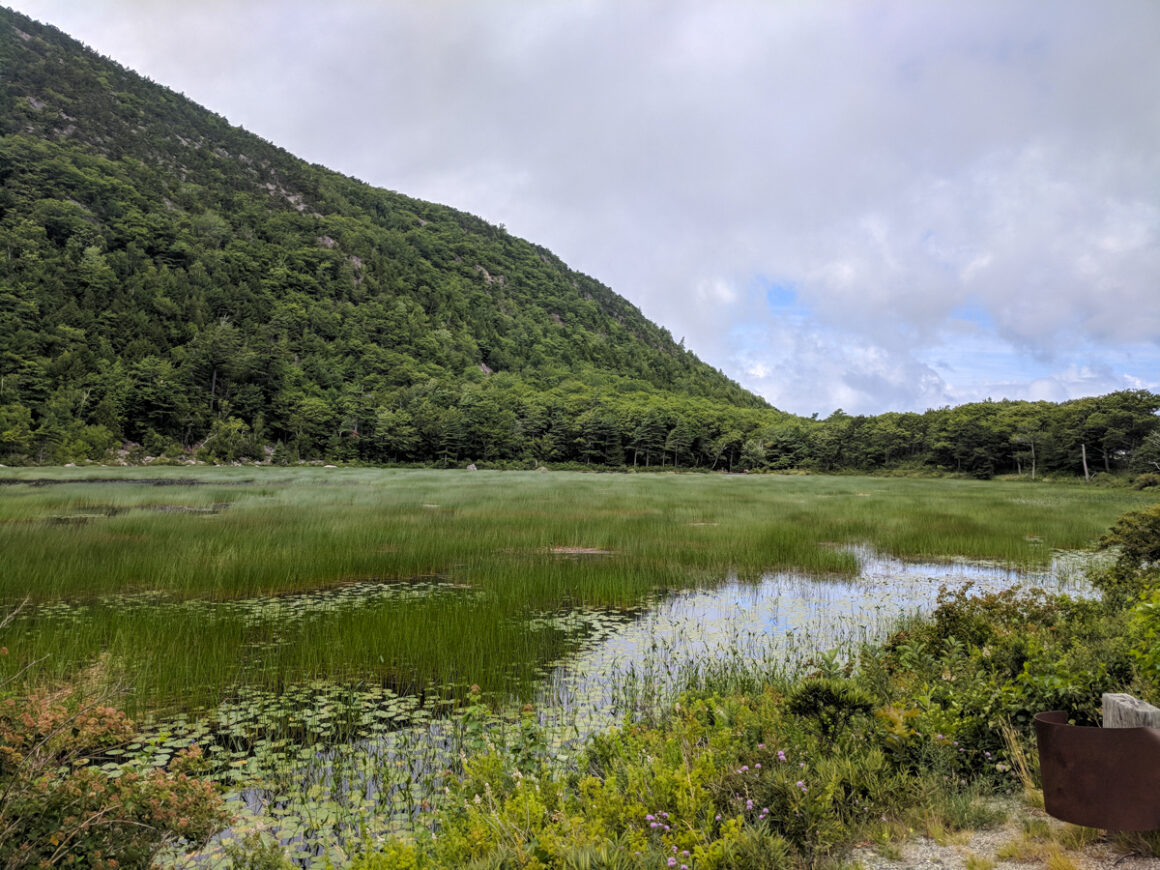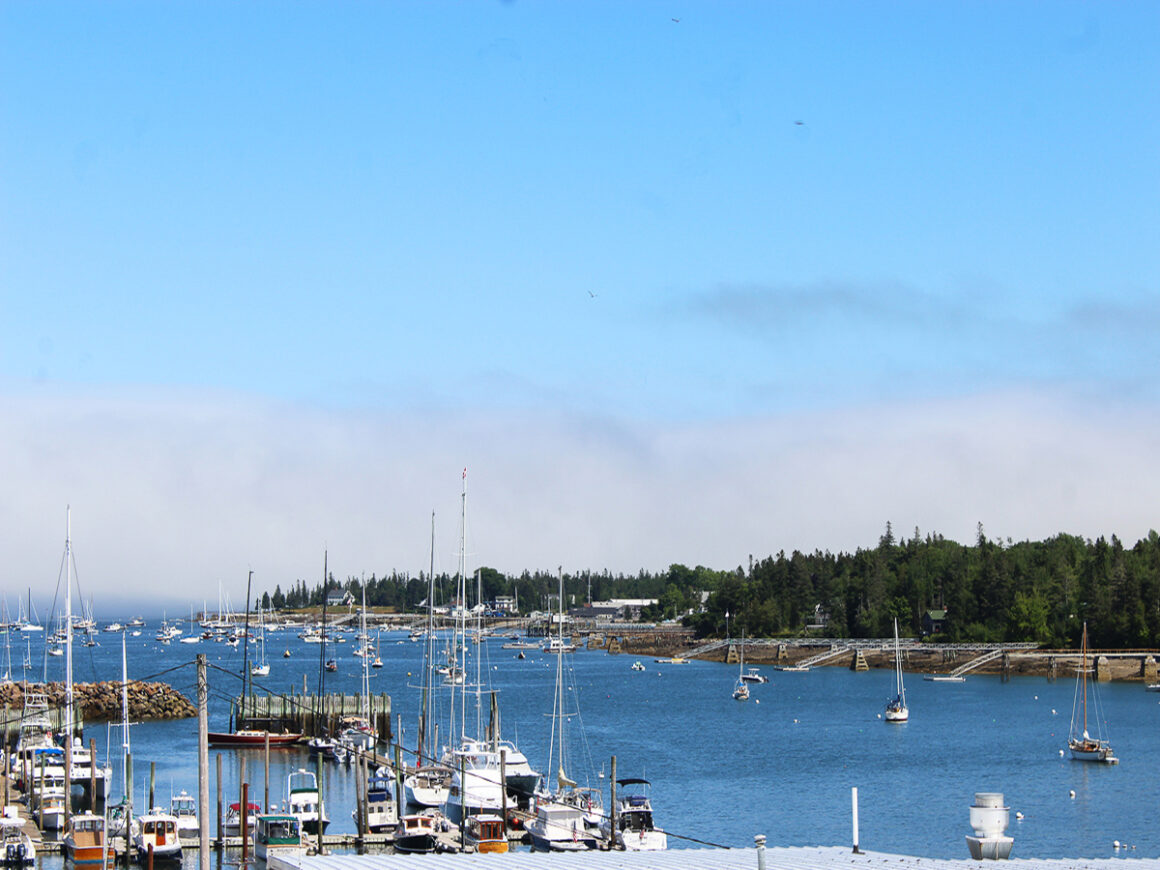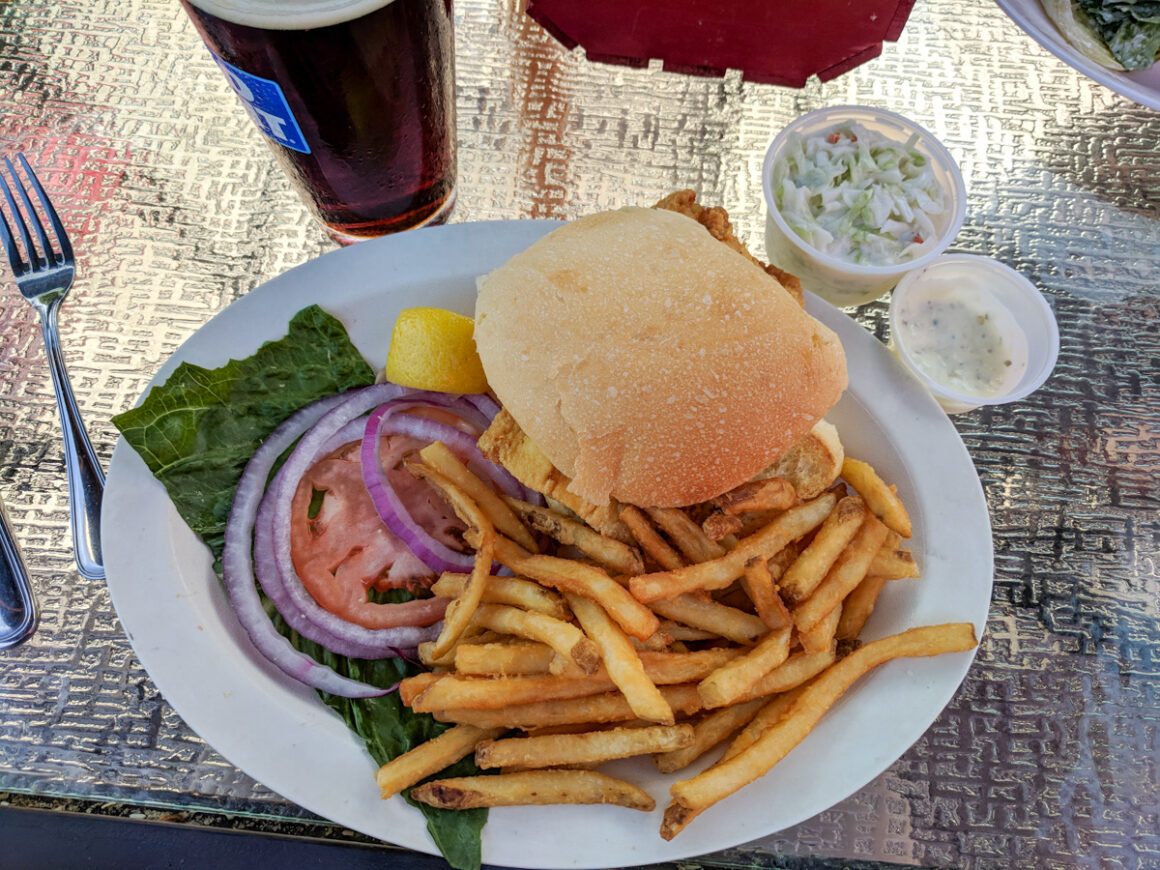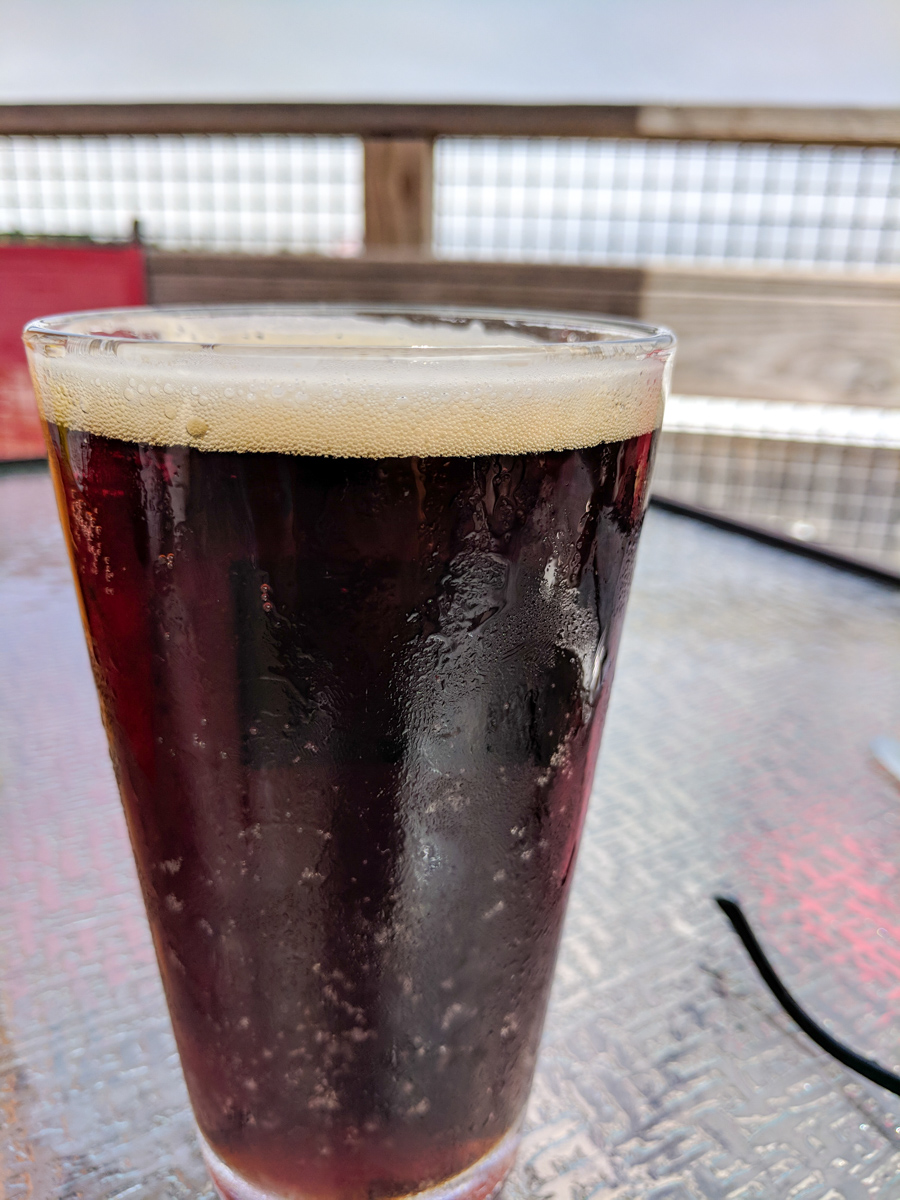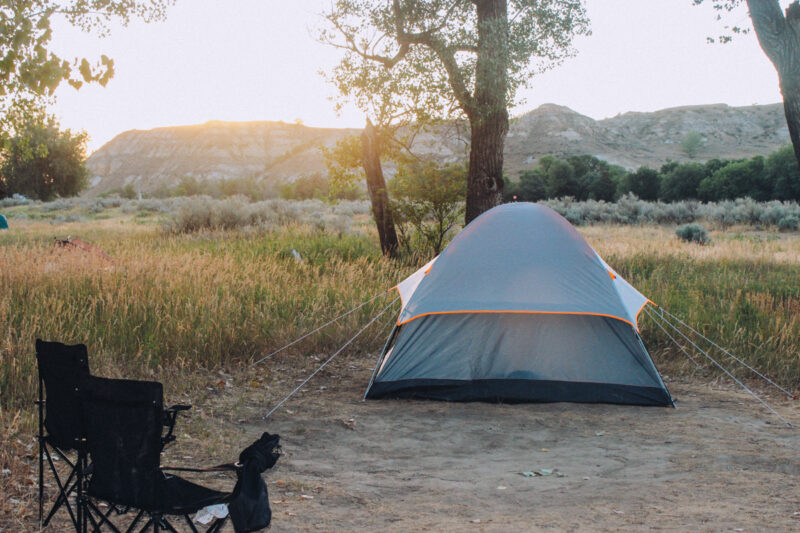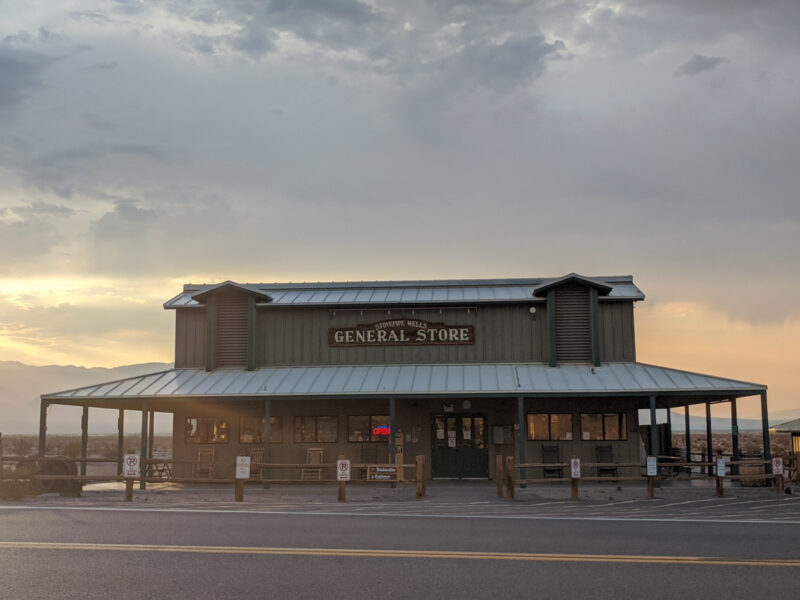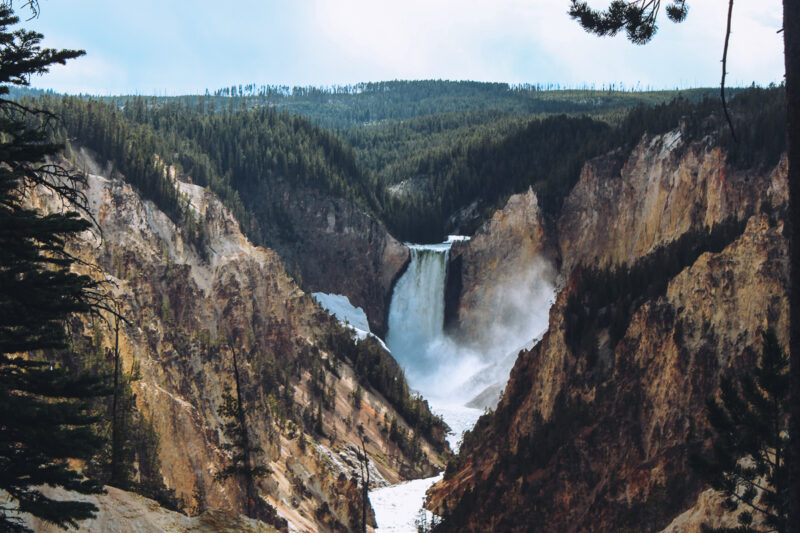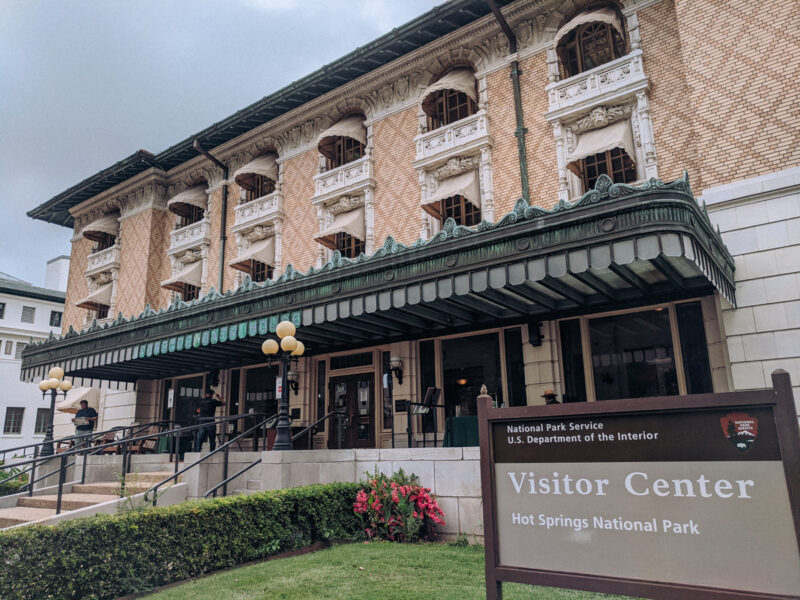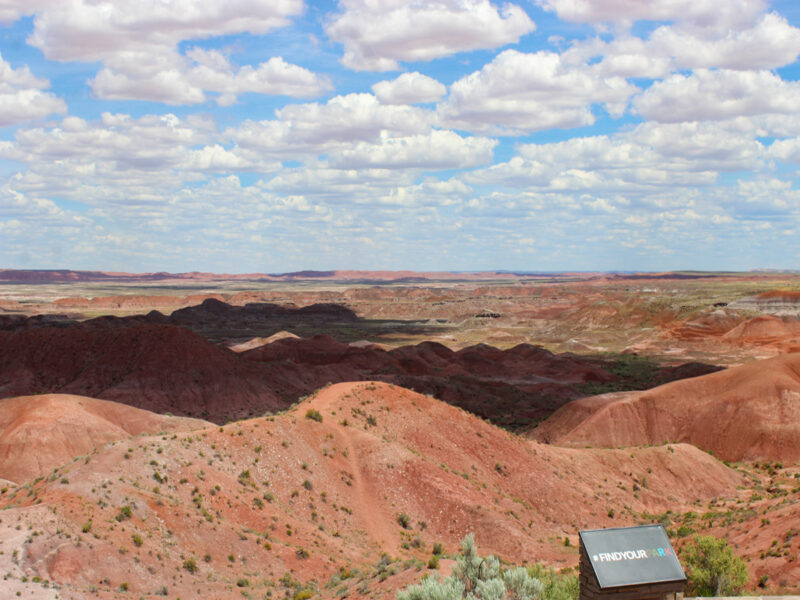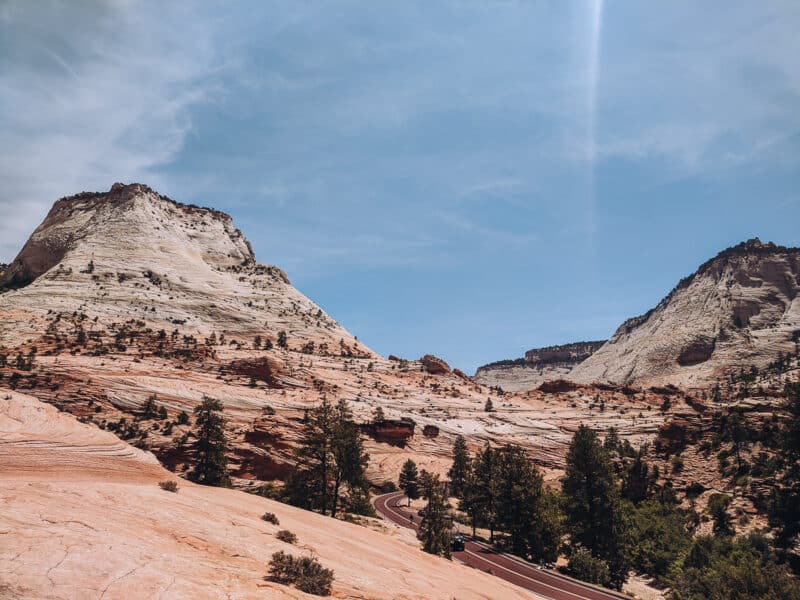Spend an Amazing Two Days in Acadia National Park
With dramatic coastlines and at times, moody, foggy weather, Acadia National Park is unlike any other national park in the eastern United States. I put off visiting for years, opting for higher mountains and trips “out west”. While Acadia might not have the pull of the western parks, it’s definitely a national park worth seeing.
If you are planning a visit to Acadia National Park or even Bar Harbor, then this article is for you. With tips on how to get there, where to stay and what to do, save this helpful itinerary for two days in Acadia National Park.
This article contains affiliate links. That means I might earn a commission, at no extra cost to you, if you book or buy something through a link I provide. This keeps Southerner Says online and on the road. Thank you for your support.
What makes Acadia National Park So Special?
Acadia National Park is a unique place. Here’s just three of the many reasons it became a national park.
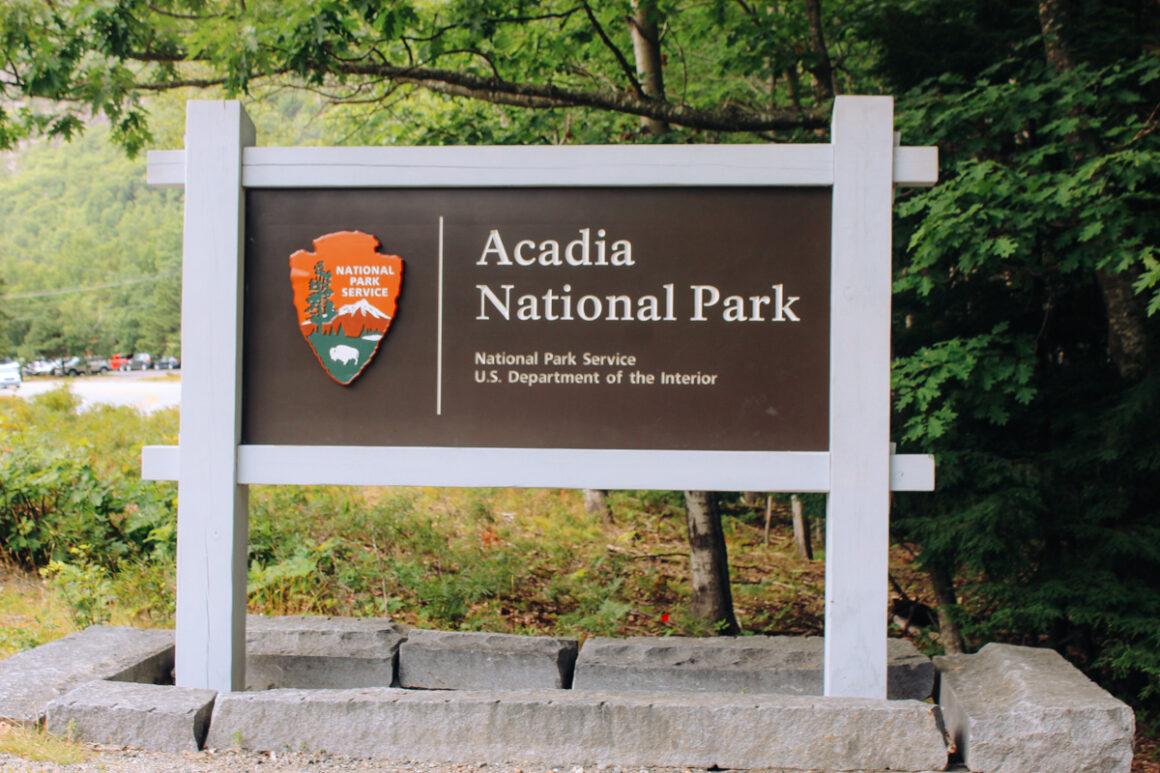
It’s Full of History
Mount Desert Island, the island where Acadia is located, has been inhabited for 12,000 years, mostly by the Wabanaki people.
It’s an Old National Park
Acadia National Park is the oldest national park east of the Mississippi. It was named a park on February 26, 1919.
It Has Some of the Best Sunrises
Cadillac Mountain in Acadia is the first place in the United States to view the sunrise.
How to Get to Acadia National Park
Located in the northeastern United States, Acadia National Park is located on Mount Desert Island, one of many islands off the east coast of Maine. The park encompasses roughly 48,000 acres and is approximately 280 miles north of Boston and 170 miles from Portland, Maine.
Named as a national park in 1919, the area that makes up Acadia had long been a playground for rich families from New York, Philadelphia and Chicago, building their summer homes to escape the heat. Fearing over-development, a few private citizens donated land so that Acacia could be preserved forever and enjoyed as the gem we know today.
For our July visit to Acadia National Park from Georgia, my daughter and I flew to Boston (BOS), (side note: Delta usually has decent price tickets from ATL) and then road tripped north, making a few stops along the way to spend two days in Acadia National Park.
Depending on where you are coming from, you could do something similar and drive north up coastal Highway 1 and 1a, or if your time is limited, drive Interstate 95. My Boston to Bar Harbor road trip article has more info about all the places we stopped on the way.
Flying to Acadia National Park
If flying to the northeast, and driving from Boston isn’t in your plans, there are closer airports. Bar Harbor Airport (BHB) is just 8 miles from downtown Bar Harbor but commercial flights are very limited. Cape Air offers a daily flight from Boston.
Bangor International Airport (BGR), 50 miles from Bar Harbor, has a few more airline choices. Allegiant, American, Delta and United, service Bangor from various U.S. cities. One of the good things about flying to Bangor is Downeast Transportation provides a shuttle bus to Bar Harbor so you could potentially fly to Bangor and take the bus to Bar Harbor.
Downeast also runs a shuttle around Mount Desert Island called the Island Explorer, offering scheduled stops in Bar Harbor and other popular features in Acadia National Park. Note: the shuttle inside the park operates late June to early October.
Besides Boston, Portland International Jetport (PWM), 173 miles from Bar Harbor, is the airport with the most flight options. All the major U.S. carriers fly to Portland and even low cost carrier Frontier has a flight from Atlanta.
Getting Around Acadia National Park
Once in the area, the best way to see Acadia National Park is by car. This gives you the freedom to come and go as you please and see much more. For rental vehicles, Discovercars.com compares prices from a variety of companies. In Bar Harbor, Acadia Gem offers electric low speed vehicle rentals for tooling around the island.
Yet another option for getting around Bar Harbor and into parts of Acadia is bicycle or e-bikes tours. Additionally, there are organized tours from Bar Harbor. Even private ones with lobster for lunch! Also, if you fly into Portland, tours can be arranged from there during high season.
Two Days in Acadia National Park – Where to Stay
Mount Desert Island offers a variety of accommodations. Everything from small inns and bed and breakfasts to woodsy camping sites. Regardless of your budget you’ll find something to fit your plans.
Camping in Acadia National Park
Camping in a national park is one of the best ways to experience a park. Acadia National Park has three National Park Service campgrounds. The two campgrounds on Mount Desert Island with the easiest access to the park are Blackwoods Campground, on the east side of the island and Seawall Campground, on the less crowded west side. The third NPS campground is on the more remote Schoodic Peninsula.
The campgrounds are open seasonally, May through mid October, and by reservation only. Reservations can be made up to two months in advance on Recreation.gov. Blackwoods is the definitely the most convenient of the two campgrounds, closest to the most popular sites in the park. But if you plan on exploring more of the island and don’t mind driving a bit, Seawall is beautiful.
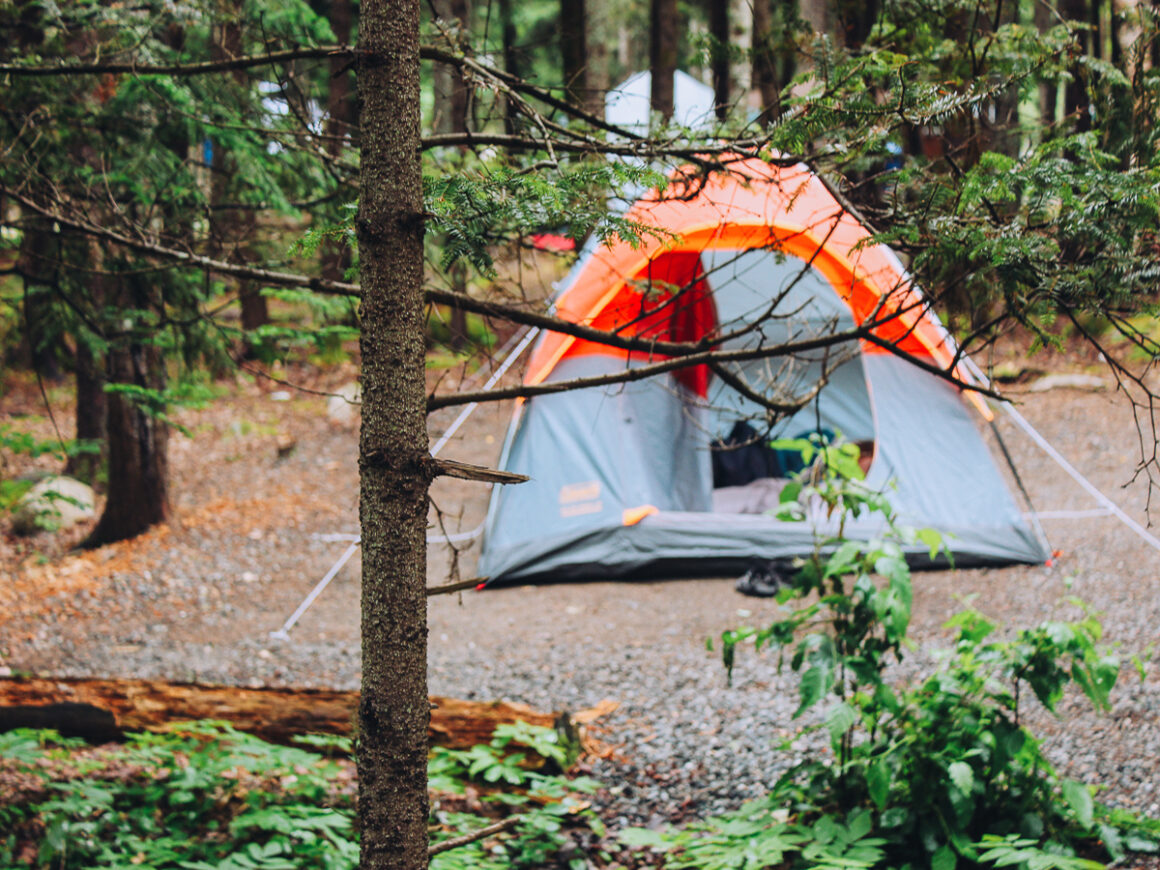
If there aren’t campsites available inside the park, no worries, there are plenty of private owned campgrounds on the island. When planning our trip, I researched a few in case we couldn’t get a site in the park. Near Southwest Harbor, Smuggler’s Den Campground looks really nice with wooded and waterfront sites.
Closer to Acadia and Bar Harbor is Mount Desert Campground, with a more central location to both sides of the island. And the ever popular KOA brand has a location near the water on the north side of Mount Desert Island. Hipcamp and The Dyrt are also useful apps for locating unique campsites and glamping near national parks.

Hotels in Acadia National Park
With no park hotel or lodge inside Acadia National Park, the closest options for overnighting will be in Bar Harbor. You’ll easily find any kind of accommodation you could want there. Ivy Manor Inn (closed seasonally) is one of the prettiest inns in downtown and near the marina, Saltair Inn Waterfront B&B offers outstanding ocean views, real bathtubs and breakfast.
Outside Bar Harbor, near Blackwoods Campground, Otter Creek Village, is the cutest little enclave with a cute market and inn. And north of Bar Harbor at Hulls Cove, the adorable Salt Cottages are everything you imagine when you think of a Maine vacation.
What To Do For Two Days in Acadia National Park
Acadia, and Mount Desert Island in general, has tons of outdoor activities and opportunity for adventure. Hiking, bicycling, horse back riding, swimming, fishing, boating and tours are just a few of the things you can enjoy. In fact, with so many things to do, two days in Acadia National Park isn’t much but it will allow you to see some of the highlights. Here’s some of the things we did during our time in Acadia.
Hull’s Cove Visitor Center
Start your two days in Acadia National Park at the park’s main visitor center. In summer, the Hull’s Cove Visitor Center is a place that you don’t want to miss. One of the first things you’ll notice are the fifty-two steps to reach the entrance. However, there is an accessible entrance at the rear of the building with parking available there.
Through educational displays and interpretive signage, the visitor center is the best introduction to Acadia and a chance to learn about the history of Mount Desert Island and the park. You can also get your park passport stamped, buy souvenirs and sign up for Junior Ranger programs. And as always, Rangers are on hand to help and out recommend things to do.
The Sieur de Monts Nature Center also serves as a visitor center in Acadia National Park with info focused on the important work that park biologists and researchers do to protect park resources. This location also has a passport stamp station.
Drive the Park Loop Road
Park Loop Road is the park’s scenic loop drive and the primary way into the park. It’s 27 miles long and takes about 3-4 hours to drive. You can access the most popular sites from this route from the numerous turnouts and scenic overlooks.
Some sections of Park Loop Road are one way and can get very crowded. Popular areas like Thunder Hole and Sand Beach tend to be especially congested. Drive with caution, paying attention to where you stop and pull over and only use the park’s designated areas. Be on the lookout for wildlife at any time but especially early morning and late evening.
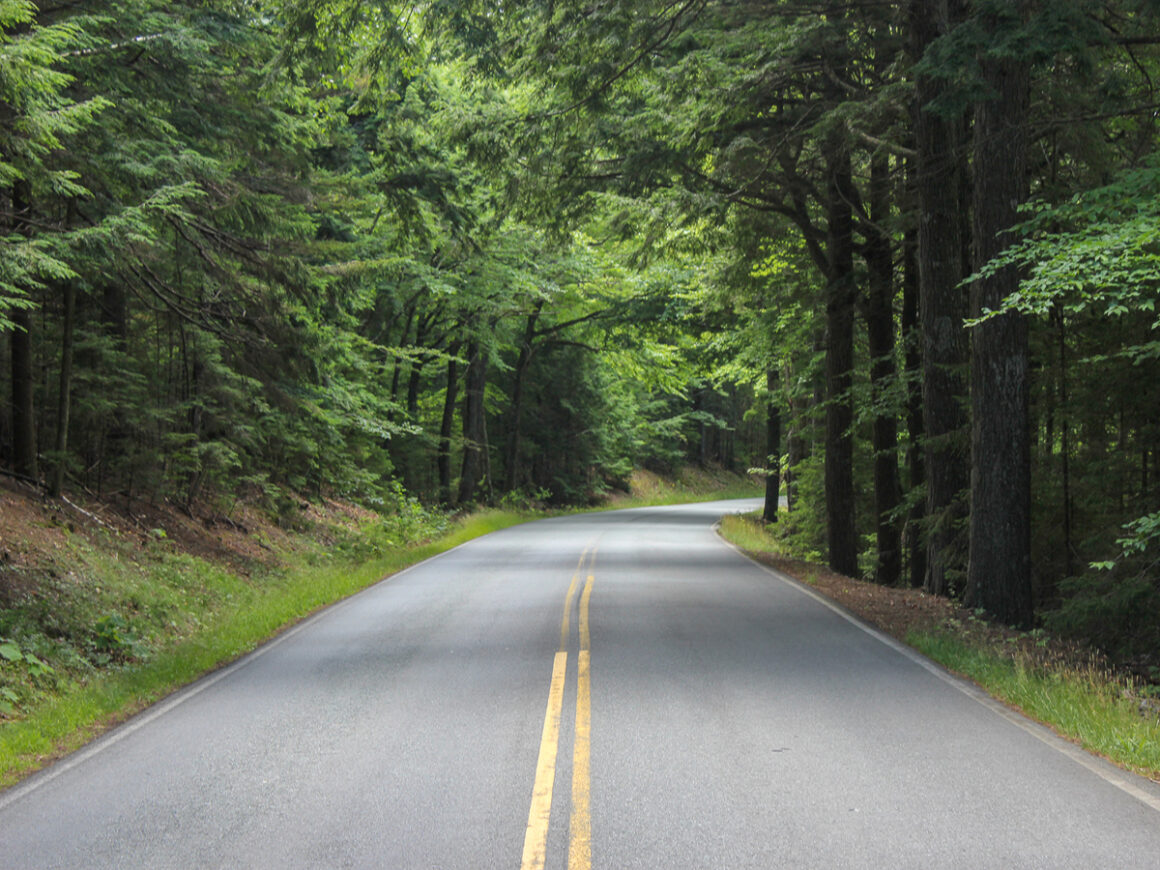
Visit Cadillac Mountain
A visit to Acadia National Park wouldn’t be complete without a visit to Cadillac Mountain. It’s the highest peak on Mount Desert Island and the eastern seaboard of the United States. If the weather cooperates, it’s the best place to watch the sunrise and sunset. Many people choose to hike but you can also drive to the top via Cadillac Summit Road.
Since Cadillac Mountain is one of the most popular spots in the park, the Park Service has implemented a timed entrance reservation system to access the mountain by car. Tentative dates for reservations in 2024 are May 22 through October 27. Find out all the details and how and when to get reservations here at nps.gov.
Unfortunately, the weather wasn’t in our favor when we drove to Cadillac Mountain. Even though it wasn’t raining, it was cloudy and foggy at the higher elevation. We gave it a couple of tries and were finally rewarded with a little blue sky on the second afternoon. The views are very much worth the effort even if you have to try a few times.
Enjoy the Carriage Roads
Acadia’s famous carriage roads are a huge part of the history of the island. John D. Rockefeller, Jr, one of the people responsible for the development of the island and park, envisioned a way to travel around without motorized cars. So, he had broken-stone roads, commonly used in turn of the century construction, built for horse and carriages.
When building the roads, the goal was to leave the island as it was. No trees or earth were moved and instead, they built the roads around the natural features to take advantage of the views. Plus, all the stone was local and the bridges and guardrails were built with granite from the island.
Every detail was thought out. Even the signposts at all the intersections, are made of Mount Desert cedar. Then those signs were then stained and painted the perfect color to compliment the surroundings. Today, visitors to Acadia National Park can enjoy the carriage roads by walking, biking or even horseback riding.
Hiking in Acadia National Park
One of the things we always do when visiting national park trips is hiking. Acadia National Park has over 150 miles of trails through forests, along the coast and mountains to choose from.
We enjoyed wandering around Otter Creek area near our campground. The Bubbles and the marshy area was lush and so green even when we visited. Other hikes included Bubble Rock, or Balanced Rock, in fog so thick that when we got to the top, you could barely see the rock or the edge of the mountain.
The easy trails around Jordon Pond offer peaceful strolls ideal for anyone, even families with small children. And Schooner Head overlook, (in the cover photo) with is its stunning ocean views, is the perfect place for a picnic lunch.
Two Days in Acadia National Park Itinerary
If your schedule only allows for two days in Acadia National Park, to maximize your time, here’s a sample itinerary of what to do in the park:
Day 1
- Visit the Hull’s Cove visitor center to start your Acadia visit.
- Morning: drive as much of the scenic loop road as you can. Must see’s include: Sieur de Monts Spring and Schooner Head overlook. Make time to walk around on the rocks at Schooner Head or have a picnic lunch or snack there. Sand Beach is great stop for swimming if the weather is favorable and Thunder Hole is always a favorite stop.
- Afternoon- drive the rest of the loop road and plan on a hike to stretch your legs. Bubble Rock or the Beehive Trail are two of the most popular hikes in Acadia National Park. Weather permitting, visit Cadillac Mountain for sunset. After sunset, go into Bar Harbor for dinner and to walk around to see the boats at the marina and visit the John B. Elis Pier.
Day 2
- Morning- Cadillac Mountain for sunrise if you are brave enough to get up at 4 am. Finish driving the park loop road if you didn’t drive it all yesterday. Visit Jordan Pond House and walk some of the trails around the pond. You can also access the some of the Carriage Roads from this area.
- Afternoon- Drive to the southwest part of the island to see the Seawall area of the park. Near the campground are some hiking trails and picnic tables.
- Drive route 102A for costal views and to see Bass Head Harbor Lighthouse.
- Return back to Southwest Harbor for dinner at one of the marinas. I suggest The Upper Deck for good views and brews. And a grouper sandwich.
When is the Best Time to Visit Acadia National Park?
The best time to visit Acadia National Park is in the late spring, summer and early fall. Keep in mind though, because of its northern, coastal location, the weather can change quickly anytime. It can be cool, even in summer, or it can get very hot. Also, rain and foggy, misty weather is quite common.
Spring
Spring in Acadia National Park is a beautiful time of year to visit. The snow has melted, the temperatures are mild. The park is bursting with new growth and you’ll have the opportunity to see wildflowers in bloom and maybe even catch a glimpse of newborn wildlife all without the summer crowds.
Summer
Summer temperatures can range anywhere from 45F to 90F. When we visited in July, the weather was unusually cool for our two days in Acadia. We wore long pants and a light jacket most of the time. It was cloudy and foggy off and on so we didn’t have a chance to see sunrise or sunset from Cadillac Mountain.
Fall
Fall is the most popular time to visit Acadia National Park because of the autumn colors. Generally, the peak fall foliage is in mid October which means the busiest time is the first of October through the Columbus Day weekend. Average October temperatures hover around 67F for the day and 45F at night.
Winter
Winter in Acadia is cold and most of the park roads close. However, portions of the scenic one way loop road are open, as well as Jordan Pond Road – weather permitting. December is the mildest of the winter months, with day time highs averaging 34F. January is the coldest month with highs averaging 29F and lows in the teens.
Before our trip, several people warned me about black flies that sometimes are a nuisance in summer but we didn’t see any or get bit by even one. Apparently, they are worse in May and June after a rainy spring.
Carrying insect repellent with you can prevent the inconvenience of having to buy some. These pocket-sized options are particularly convenient for air travel.
Acadia National Park FAQs
How Much Does Acadia National Park Cost?
The entrance fee for cars is $35 for 7 days and $30 for motorcycles and must be displayed clearly visible through the windshield. Consider purchasing an America the Beautiful annual park pass. For $80, this pass covers you and everyone in your car, at over 2k interagency sites for a year. It’s a bargain, especially if you are planning on visiting several national park units.
Is 2 Days in Acadia National Park Enough?
I think it depends. If you want to see highlights of the park, then yes, you can see popular attractions in the park in two days. To really get to know the park and enjoy everything if offers, then you’ll need more time. I think 5 days up to even a week would be a perfect amount of time for the park, Bar Harbor and Mount Desert Island.
Is There Cellular Phone Service in the park?
In Bar Harbor, probably. But in the park and campgrounds, service is very spotty depending on your celular provider.
Are Dogs Allowed in Acadia National Park?
Yes! Acadia National Park is one of the most dog friendly parks in the park system. There are over 100 miles of trails where pets are permitted. Of course, they should always be leashed and never left unattended.
Acadia National Park Tips
- Download a NPS Acadia National Park map at nps.gov or purchase a more detailed National Geographic Acadia and Mount Desert Island map here.
- Add the free National Park Service mobile app to your mobile device for informative details about the park and other don’t miss spots.
- Having an America the Beautiful Park Pass can save you money when visiting national parks and other public lands. Buy yours here.
- The National Park Trust also offers a helpful ParkPassport mobile app that helps navigate Acadia National Park.
- Be park ready and purchase a National Park Passport Book ahead of time so you can collect your park stickers and stamp your book.
- Even if you are visiting in summer, be prepared for cool, rainy, misty weather. My REI rain jacket has kept me dry in so many situations.
- Learn how to be a better traveler and do your part by using Leave No Trace principles when visiting national parks and public lands.
My Final Thoughts on Two Days in Acadia National Park
Out of all the national parks I’ve visited, Acadia National Park has been one of my favorites. It’s easy to get to, easy to maneuver and there are so many activities to choose from. It’s a great park for first-timers, solo travelers, families and seniors, since many of the trails are assessible.
It’s even a romantic national park, perfect for a New England honeymoon or a couple’s weekend getaway. So, if you haven’t already, don’t be like me and delay, plan your visit to Acadia National Park sooner rather than later. You won’t be sorry!
See you on the road!


